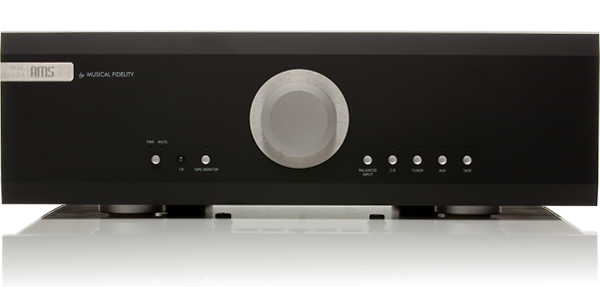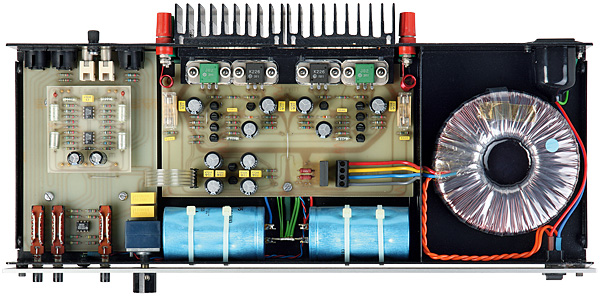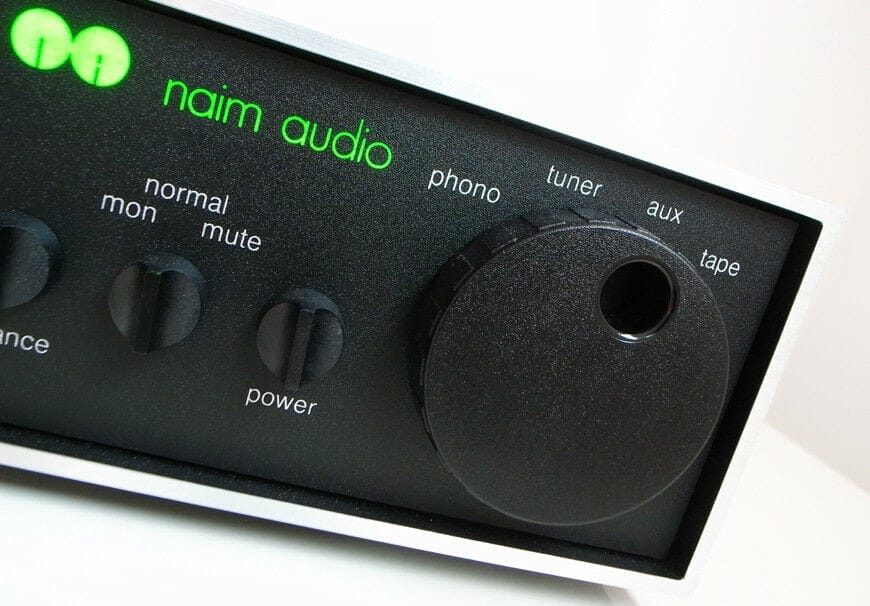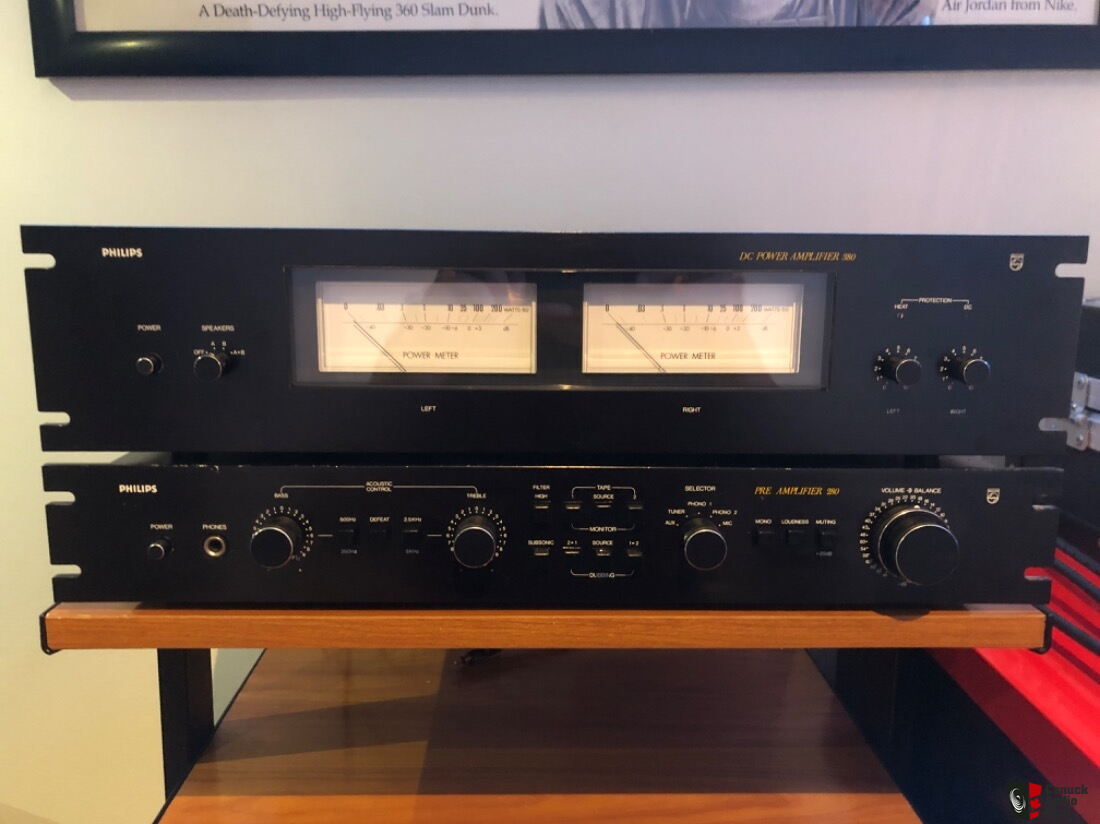When it was first released in 2010, this dual mono integrated Class AB powerhouse (claiming 125W into 8 Ohms) was a costly piece of kit at £5,750. It’s solidly constructed and polished, but it’s not a £6,000 Japanese device — there’s no luxuriously covered brushed aluminium, astonishing shutlines, or a plethora of elegantly performing buttons. Instead, the Moon has a more industrial feel to it, but it still looks nice in a modern style and has a lot of personality. With a huge volume knob with lovely motion and a massive LED display that can be customized to name the input you’re using, it doesn’t feel cheap.
The Moon features a ‘no overall feedback’ design, twin custom proprietary toroidal transformers, a ‘oversized’ dual-mono power supply, proprietary Moon bipolar output transistors with ‘unprecedented gain linearity,’ gain offset for each individual line input with a 10dB range (so each input sounds the same volume), and Class A operation up to 5W on the inside. According to Simaudio, the four-layer printed circuit tracings result in a “exceptionally short” signal path and superior grounding. On the back panel, there are four pairs of RCA phonos, one pair of balanced XLRs, a SimLink Port, RS-232, and WBT speaker connectors, as well as a SimLink Port, RS-232, and WBT speaker jacks. The dimensions are 48 pounds and 18.8 x 4.0 x 18.1 inches.
The 600i sounds clean, smooth, and pleasant right out of the box, but nothing more. It takes a few hours to open up and give scale and subtlety to what is essentially an honest, unfussy, and always civilized persona. You won’t get a strong, shouty midband or treble that will knock your head off with the Moon 600i; even at its worst, you won’t need to make excuses for it. When the Moon gets into its stride, though, it begins to sing in a way that justifies its high price tag.
The Moon 600i boasts a spacious, powerful, and punchy sound, as demonstrated by Sonar Kollectiv’s cover of 4hero’s Universal Love, which held together the song’s intricate mix with ease. It’s gripping, but not in the sense that it has to be perceived to be grippy all of the time, like a 1980s Naim. Even if you don’t get the initial few nanoseconds of the note’s envelope, the Moon still provides it to you as part of the larger musical image. It’s one of the best-sounding Class AB amplifiers I’ve heard, with no grain, harshness, or other distracting characteristics. You find yourself dissolving into the music rather than sitting in terror of it shouting at you on that especially caustic female note since it is smooth and seamless across the frequency range. Indeed, the main ‘telltale’ sign of its solid-state orientation is a small loss of tone colour in instruments; voices have less roughness and acoustic instruments have less patina than with a competent tube amp.
Despite this, the Moon has a lot of detail. It’s not one to put the emphasis on anything towards the back of the mix, but it’s all there in the proper proportions if you listen carefully. The 4hero remix of Fragile State’s Every Day a Story was a treat to listen to; the first four bars of processed electronic percussion were hard and metallic, like they should be, and then that big acoustic baseline came in, the 600i dishing up vast tracts of low frequencies in a breathless manner. The rest of the mix maintained in crisp focus the entire time, the amp properly tracking the gorgeous backing keyboard swirls and keeping up with the percussion. Moving on to the break, the piano playing was really delicate before the loud, industrial electronic drumming reappeared. The enormous Moon shone brightest on music like this, displaying its happy mix of power and nuance to greatest advantage. It captures powerful sounding music in its finest light, at high volumes, with no evidence of stress and the kind of subtlety you’d expect from a low-power Class A job. As a result, it works well with techno and rock music.
The Moon delivered a sprightly but clean rendition of REM’s early eighties indie masterwork, Talk About the Passion. The music slid along, the amp producing a rich version of Michael Stipe’s sad voice while infusing pleasing body into its exquisite cello sections. At the same time, it made Peter Buck’s lead guitar sing, demonstrating his ability to play in a rhythmic manner. The drums are rapid and well synchronized with the bass guitar, resulting in a low-key but immensely fulfilling performance. This song also revealed the Moon’s inherent treble mayhem; I didn’t feel the need to grab for my NS1000Ms’ treble trim pots to save my ears, but those hi-hat cymbals came through as vibrant and full of life.
Perhaps you might characterize the Moon as uniquely Canadian; it simply goes on with the work without show, flair, or frills while yet making sure it has a good time! It features a big, open soundstage, a powerful, dynamically articulate sound, a smooth and consistent tone, and no rough edges. Is it then the ideal integrated amplifier? No way. It’s near to being the ideal all-rounder in that it’s a jack of all trades and a master of a few, but its quintessential ‘very excellent at everything’ personality means it doesn’t quite excel anyplace. This isn’t for everyone, but for some, it’ll be all they’ll ever need.







